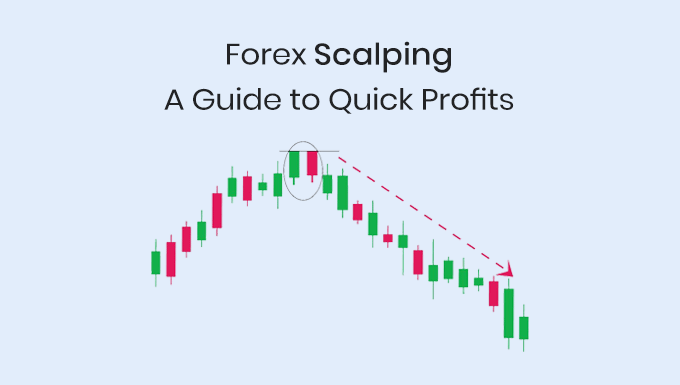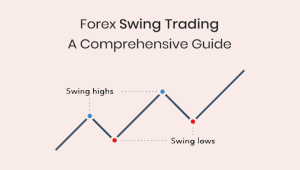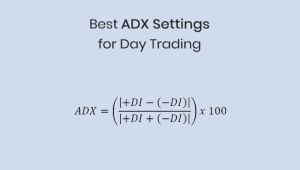Forex scalping is a popular trading strategy that aims to profit from small price movements in the forex market. Designed for traders who prefer a fast-paced environment, scalping involves entering and exiting trades within a short time frame, usually seconds to minutes. This guide offers you an in-depth look at various aspects of forex scalping, including techniques, tools, and best practices.
Table of Contents
• The Pros and Cons of Forex Scalping
• Strategies for Effective Forex Scalping
• Choosing the Right Forex Broker for Scalping
• Forex Scalping Tools and Indicators
• Risk Management in Forex Scalping
• Conclusion
• FAQs
What is Forex Scalping? A Brief Overview
What is Forex Scalping?
Forex scalping is a trading strategy employed to capture profits from small price gaps that are usually created by either order flows or spreads. Traders leveraging this approach are called scalpers. They make dozens or even hundreds of trades in a single trading day.
Key Characteristics
- Short Time Frame: Trades typically last from a few seconds to several minutes.
- Small Profit Margins: The focus is on small price movements.
- High Volume: Traders execute a large number of trades.
- Quick Decisions: Requires quick thinking and swift execution.
- Low Risk: The short timeframe aims to minimize market risk.
Types of Forex Scalping
There are various types of forex scalping methods, but they all fall under two broad categories:
- Automated Scalping: Uses forex robots and expert advisors to find and execute trades.
- Manual Scalping: Traders need to find and execute each trade themselves.
Market Conditions
For scalping to be effective, the market must be liquid and volatile. A liquid market ensures that trades can be executed quickly and at a known price. Volatility provides the small price changes necessary for quick profits.
Scalping Pairs
Forex pairs with lower spreads are typically preferred for scalping. Common choices include major pairs like EUR/USD, GBP/USD, and USD/JPY.
Leverage in Scalping
Many scalpers use high leverage to magnify the returns from small price movements. However, this also increases the risk and can lead to quick losses.
Time Investment
Forex scalping is time-intensive. Traders need to continuously monitor the market and make quick decisions based on real-time data.
Skill Requirements
Forex scalping isn’t for everyone. Due to its nature, scalping is generally considered suitable for traders who have a solid understanding of the market and quick decision-making abilities.
The Pros and Cons of Forex Scalping
The Pros and Cons of Forex Scalping
Understanding the advantages and disadvantages of forex scalping can help traders decide whether this high-speed strategy is right for them. Here’s a detailed look at both sides of the coin.
Advantages of Forex Scalping
- Quick Profits: The primary draw of scalping is the possibility of obtaining quick profits, often within minutes or even seconds.
- Lower Risk Exposure: Because trades are held for a very short period, market risk is generally lower compared to other trading styles.
- More Opportunities: High-frequency trading provides more opportunities to make profit.
- No Overnight Risk: Positions are closed before the end of the trading day, avoiding overnight risks.
- Flexible Timing: Scalping can be done at almost any time during market hours.
Disadvantages of Forex Scalping
- High Costs: The cost of trading can add up quickly due to the high number of trades, affecting profitability.
- Stressful: The need to constantly monitor charts and make quick decisions can be mentally exhausting.
- Time-Consuming: Scalping requires a significant time investment.
- High Leverage Risks: While leverage can amplify profits, it also increases the risks of significant losses.
- Slippage: Rapid execution is essential, and any delay can result in slippage, affecting the profit margin.
Tools and Costs
High-quality trading platforms like MT4 and MT5 are very popular, and access to real-time market data and a high-speed internet connection are essential tools for scalping. These come at a cost and should be factored into profitability calculations.
Regulatory Considerations
Some brokers and jurisdictions may have rules that limit or prohibit scalping. It’s crucial to be aware of any such restrictions beforehand.
Is Scalping Suitable for You?
Given the pros and cons, traders should assess their trading style, risk tolerance, and skill level before adopting a scalping strategy. Demo trading can offer valuable insights into whether scalping is a good fit.
Strategies for Effective Forex Scalping
Strategies for Effective Forex Scalping
The success of a forex scalping strategy largely depends on the techniques used. There are multiple strategies employed by scalpers to maximize profitability, and here are some of the most effective ones.
Trend Following
- Moving Averages: Many scalpers use moving averages to identify the direction of the trend.
- Momentum Indicators: Tools like the RSI or MACD can be used to gauge the strength of a trend.
Range Trading
- Support and Resistance: These levels can be used to make buy or sell decisions.
- Bollinger Bands: When the price touches the upper or lower band, it might be an indication to buy or sell.
News Trading
- Economic Calendar: High-impact news events can cause significant price movements that scalpers can exploit.
- Sentiment Analysis: Reading market sentiment can also be a valuable strategy when news trading.
Arbitrage
- Price Differences: Some traders find price discrepancies between different markets or similar instruments and capitalize on those.
- Triangular Arbitrage: This involves three different currency pairs and is more complex.
High-Frequency Trading (HFT)
Some scalpers use high-frequency trading platforms that can make a large number of trades within milliseconds.
1-Minute Scalping
This is a simple strategy where traders try to gain a few pips multiple times during a day’s trading.
The Right Strategy for You
Each strategy comes with its own set of rules, and what works for one trader may not be suitable for another. Testing different strategies on a demo account is a good way to find out which approach works best for you.
Choosing the Right Forex Broker for Scalping
Choosing the Right Forex Broker for Scalping
The choice of forex broker can make or break your forex scalping endeavors. Here’s how to ensure you choose a broker that complements your scalping strategy.
Broker’s Policy on Scalping
The first thing to consider is whether the broker you are interested in allows scalping. Some brokers discourage or even prohibit this trading strategy, typically because it can be less profitable for them.
Spread and Commission
- Low Spreads: For scalping to be profitable, low spreads are crucial.
- Commission: Check whether the broker charges a commission on trades and how it impacts your potential profits.
Execution Speed
A delay in trade execution can result in slippage, which can be devastating for a scalper. The broker’s execution speed should be top-notch.
Leverage
While high leverage can be advantageous for scalping strategies, it also comes with higher risk. Ensure the broker offers the level of leverage you are comfortable with.
Trading Platform
- User Interface: The platform should be user-friendly and tailored for scalping.
- Technical Tools: Make sure it offers all the indicators and tools you use in your scalping strategy.
Account Types
Some brokers offer different types of accounts that have features beneficial for scalpers, such as lower spreads or faster execution.
Regulatory Compliance
Ensure that the broker is regulated by a recognized financial authority. This adds an extra layer of safety to your trading capital.
Customer Support
With the high-speed nature of scalping, having quick access to customer support to resolve issues is essential.
Demo Account
A demo account allows you to test the broker’s platform to see if it suits your scalping needs before you start trading with real money.
Forex Scalping Tools and Indicators
Forex Scalping Tools and Indicators
To successfully navigate the rapid waters of forex scalping, traders often employ a variety of tools and indicators. Here’s a rundown of some of the most commonly used.
Moving Averages
Simple and exponential moving averages are popular choices for identifying trends in price movement.
Stochastic Oscillator
This momentum indicator can help scalpers identify overbought or oversold conditions.
Bollinger Bands
These bands adapt to volatility in the price of a forex pair and can help identify potential reversals in price.
Relative Strength Index (RSI)
Used to identify the speed and change of price movements, RSI is especially useful in a trending market.
Fibonacci Retracement
Some scalpers use Fibonacci levels to identify potential support and resistance levels.
Tick Charts
These charts represent price changes over a certain number of transactions and can be more useful than time-based chart intervals.
Volume Indicators
Understanding market volume can offer insights into potential future price movements.
Economic Calendar
An economic calendar provides a schedule of news events that could significantly impact forex markets.
Automatic Trading Software
While not necessary, some scalpers opt for automated trading software such as robots and expert advisors to execute trades on their behalf, based on pre-set criteria.
Risk Management in Forex Scalping
Risk Management in Forex Scalping
Effective risk management is the cornerstone of any successful forex scalping strategy. Here are key principles every scalper should follow.
Set Stop-Loss Orders
Given the high-frequency nature of scalping, setting a stop-loss for each trade is crucial to cap potential losses.
Risk-to-Reward Ratio
Maintaining a favorable risk-to-reward ratio can ensure that the profits from winning trades offset losses from unsuccessful ones.
Position Sizing
Keep the size of your positions in check to minimize the impact of any potential losses.
Diversify Currency Pairs
Trading multiple currency pairs can offer some level of diversification, reducing the risk of a severe loss from a single trade.
Limit Leverage
While leverage can amplify gains, it can also exacerbate losses. Use it judiciously.
Continuous Monitoring
Due to the fast-paced nature of scalping, continuous monitoring of market conditions and open positions is essential.
Daily Loss Limit
Set a daily loss limit to safeguard against any major downturns that could affect your trading capital.
Review and Learn
Regularly review your trading activities to identify any mistakes or opportunities for improvement.
Use Demo Accounts for Practice
Before applying a new strategy or tool, practice with a demo account to ensure it’s suitable for your trading style.
Conclusion
Forex scalping is an intricate trading strategy that offers the potential for quick profits, but it also comes with its share of risks and challenges. A successful scalping strategy requires a comprehensive understanding of the forex market, quick decision-making abilities, and stringent risk management protocols. The selection of a suitable broker and the effective use of trading tools can further elevate your scalping efforts. As with any trading strategy, it’s crucial to continuously educate yourself, practice, and adjust your tactics to stay profitable in the ever-changing forex market.
FAQs
1. What is Forex Scalping?
Forex scalping is a high-frequency trading strategy that aims to make small profits from very short-term price movements. Traders engage in buying and selling currency pairs and aim to exit each trade quickly, often within minutes or even seconds, to capture small gains.
2. How Do I Choose the Right Broker for Forex Scalping?
Choosing the right broker for scalping involves considering several factors. Check if the broker allows scalping and offers low spreads and commissions. The execution speed, trading platform features, and regulatory compliance are also essential considerations. Many scalpers prefer brokers who offer demo accounts to test the trading environment.
3. What Tools and Indicators are Commonly Used in Forex Scalping?
Some of the popular tools and indicators used in forex scalping include Moving Averages, Stochastic Oscillator, Bollinger Bands, Relative Strength Index (RSI), and Tick Charts. Some traders also rely on an economic calendar and automated trading software to make their trading more efficient.
4. What are the Key Risk Management Strategies for Forex Scalping?
Effective risk management in forex scalping involves setting stop-loss orders, maintaining a favorable risk-to-reward ratio, and position sizing. Diversification across currency pairs and limiting the use of leverage are also recommended practices. Setting daily loss limits and regularly reviewing your trading activities can further enhance risk management.
5. Is Forex Scalping Suitable for Beginner Traders?
Forex scalping requires a deep understanding of the forex market, quick decision-making, and the ability to handle stress effectively. Given the complexities and the high level of risk involved, it may not be suitable for all beginners. However, those who are willing to invest the time to learn, practice on a demo account, and develop a solid risk management strategy may find scalping to be a rewarding trading style.






